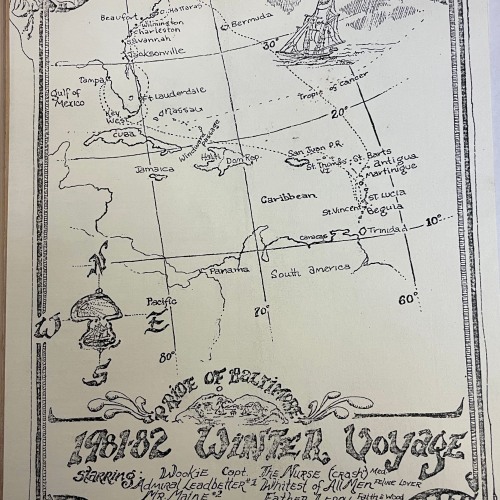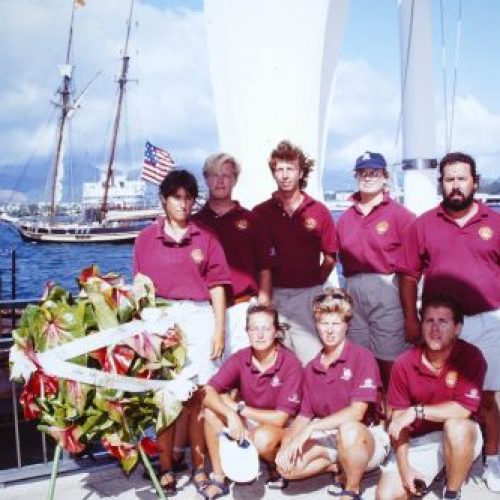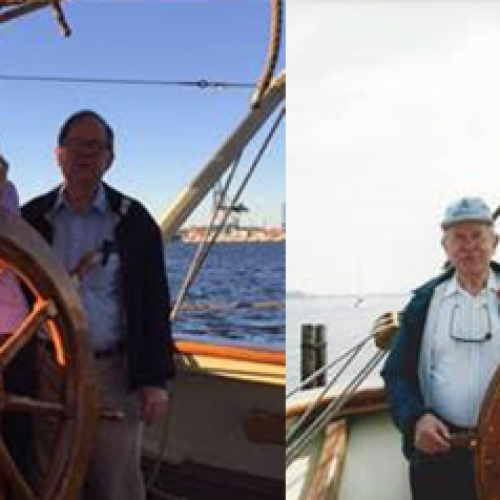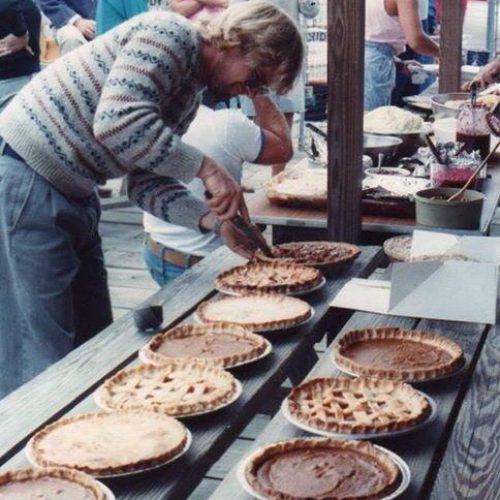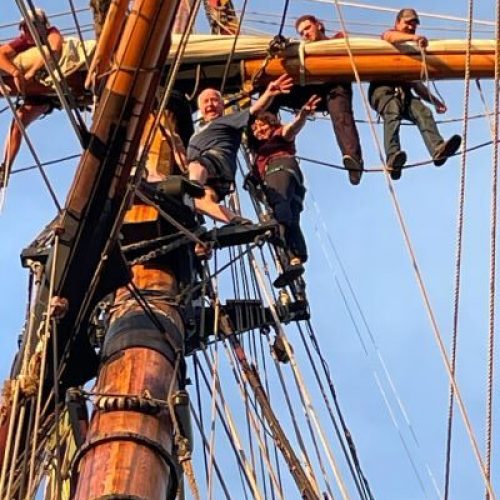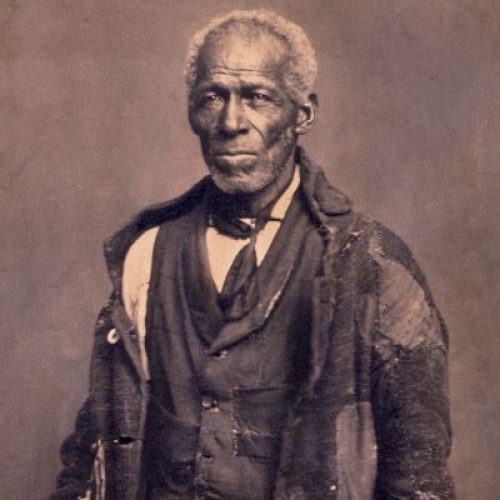23 July 2012
Pos: Alongside the Maritime Museum of the Atlantic, Halifax, Nova Scotia
Wx: South Force 2, Clear
Pride of Baltimore II has had a busy interval since her last Blog; and it was full of racing, anchorages, tides, fog and more racing. Eleven days ago we cleared through the Cape Cod Canal, and by mid-morning began our time trial for the third race of the Tall Ships Challenge. Prepared for an evening breeze, we nonetheless jumped to take advantage of the unexpected mid-morning Northerly wind, and worked to keep a close reach across Cape Cod Bay. Shifting conditions through the day had the breeze up and down, and Pride II’s track line across the chart looked like child’s scribble.
But just when we thought we’d finished our eight hours and started sailing North toward Portsmouth, the anticipated Southerly came up; we set the stuns’l and shook off the old track like clearing an etch-a-sketch, carrying on through the night under all plain sail plus. While no sled ride, our second trial netted us an average speed of over six knots, and was good enough for Pride II’s third first-place finish in the Tall Ships Challenge series.
Post race, we anchored off Appledore Island, the southernmost of Maine’s incredible count of islands, at the invitation of Captain Kevin Wells, who is Senior Captain for the research facility there. Having sailed in the Tall Ship fleet for years, Kevin is always eager to welcome visiting vessels. The SSV Corwith Cramer and Schooner Harvey Gamage had already arrived, and Maine Maritime Academy’s Arctic Exploring Schooner Bowdin arrived shortly after we did. We made for a busy little mooring field off an island that is nearly overrun with gulls. All forays ashore are well warned that the island’s sea birds will aggressively defend their young and their turf. Some of the researchers even wear bicycle helmets adorned antennae made from tennis balls and coat hangers to keep the dive-bombing beaks at bay. Talk about angry birds!
A quiet night at anchor ended with Venus and Jupiter beaming bright at 0400 hours as we steamed for Portsmouth, New Hampshire. This classic New England Seaport offers singular difficulties in dealing with current, and so our four pre-festival day sails were hosted in the outer section of the river off New Castle, NH. On Friday, we boarded another sold-out boat for a Parade of Sail in concert with the Sloop Providence, a replica of John Paul Jones’ first command in the Continental Navy, and the Gundalow Company’s newly constructed Piscataqua, a traditional Piscataqua River cargo vessel. After the short, busy trip up the river, we secured across from the picturesque Strawberry Banke Museum and opened to thousands of eager public.
Few ports are as tide bound as Portsmouth, and so when the high slack water came at 1130 Monday morning, both Pride II and Providence were away with it. Saluting the town on our way out, we carried some sail to complete the show. Sadly, it was just for show – the Gulf of Maine was like a mill pond – a foggy, soggy mill pond all the way to Cape Sable at the West end of Nova Scotia. The last time trial was only to be sailed in Nova Scotian waters, and the breeze seemed to be waiting for us there. At 1900 Tuesday evening, we cracked on sail until everything was set and drawing, and at 2000 started our race. This time it was quite a ride. Fog alternately encircled and released us, passing squalls glimmered lightning through the vapor, and Pride II raced on in 18-22 knots of wind and a building sea, averaging 10.23 knots for the eight-hour race, at one stage even surging up to 12.3. A good showing, but the USCG Barque Eagle was also racing, and the strong favorable breeze makes her a strong contender. Fingers are crossed as we await the results.
For now, after a full sail and four gun salute entrance, we’re snug in at Halifax enjoying the expected warmth of Nova Scotian hospitality and the surprising warmth in the Nova Scotian weather.

